TPO - Hill A1 is considered the "throat", "the key to life" protecting the central area of the
Dien Bien Phu stronghold, protecting the residence and workplace of General De Castries. To destroy this stronghold, our army spent 39 days out of 56 days and nights in Dien Bien Phu with many sacrifices and losses...
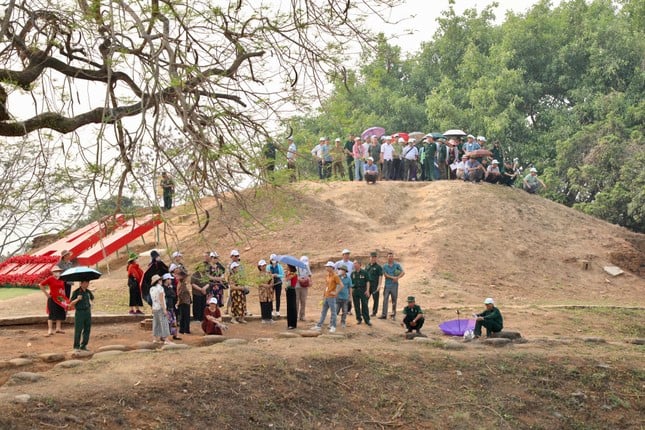 |
| A1 relic (the enemy called it Elian 2 stronghold) is located next to National Highway 279 (7/5 Street) in Muong Thanh ward, Dien Bien Phu city, Dien Bien province. The hill is 32m high above the road surface, 83,000m2 wide. |
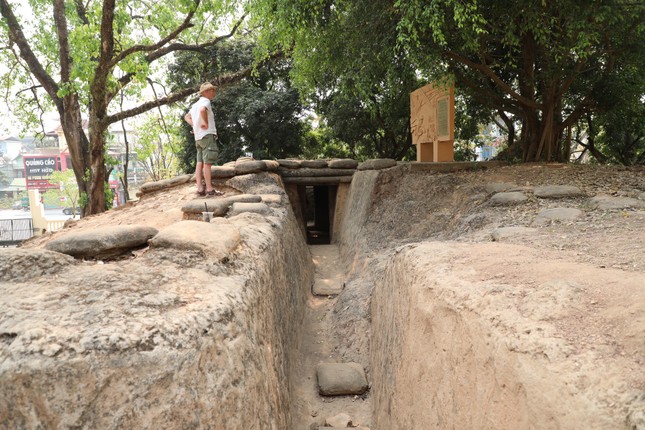 |
| The "truncated banyan tree" bunker is the first place to visit at the relic. This bunker was captured by our Company 671 (belonging to Battalion 251, Regiment 174, Division 316) at 1:30 a.m. on May 7, 1954. |
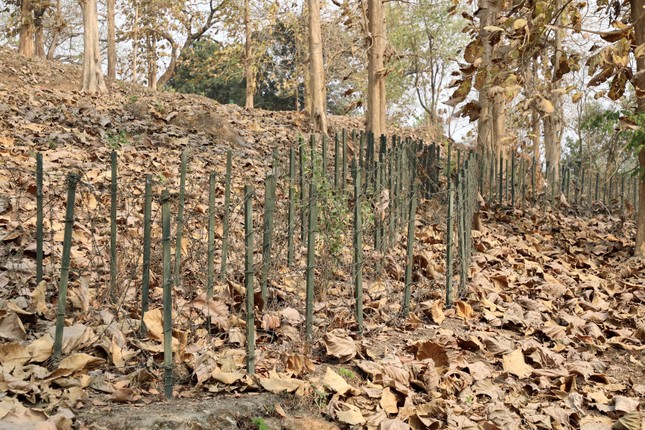 |
| 70 years have passed, but rows of barbed wire, trenches, bunkers... are still preserved on hill A1 as proof of the brutality of war. |
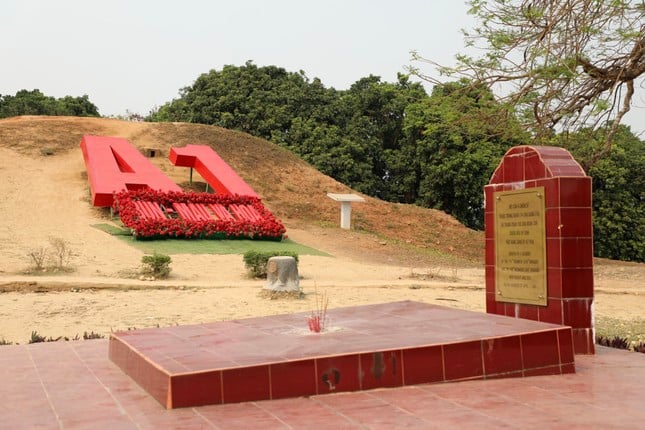 |
| The Dien Bien Phu campaign lasted 56 days and nights, but our army spent 39 days and nights attacking A1 hill alone. The enemy deployed many troops and powerful firepower in solid fortifications. But with the will to fight and win, our army completely controlled the A1 stronghold at 4:00 a.m. on May 7, 1954, opening wide the door to advance straight into the center of the Dien Bien Phu stronghold complex. |
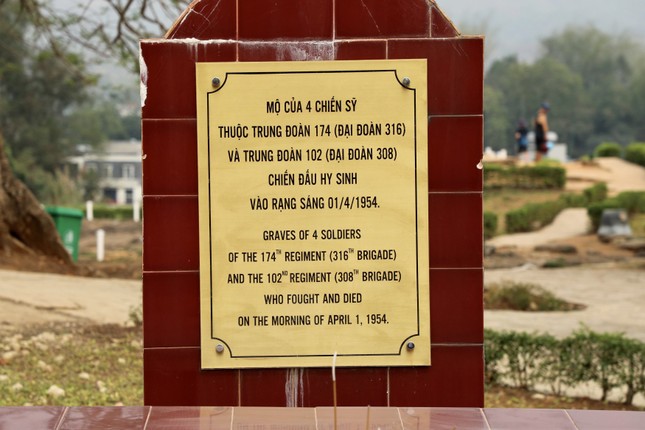 |
| After 39 days and nights of fighting, more than 2,000 of our officers and soldiers heroically sacrificed their lives at Hill A1. |
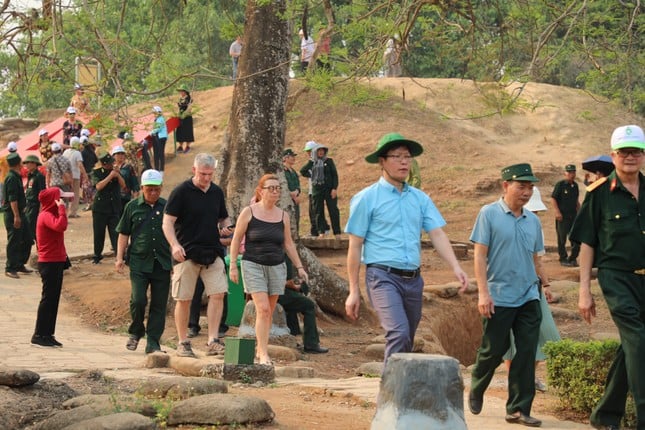 |
| Nowadays, the number of domestic and international tourists coming to visit and experience the Dien Bien Phu Battlefield relic complex is increasing. Among them, A1 hill is one of the places that attracts the most visitors. |
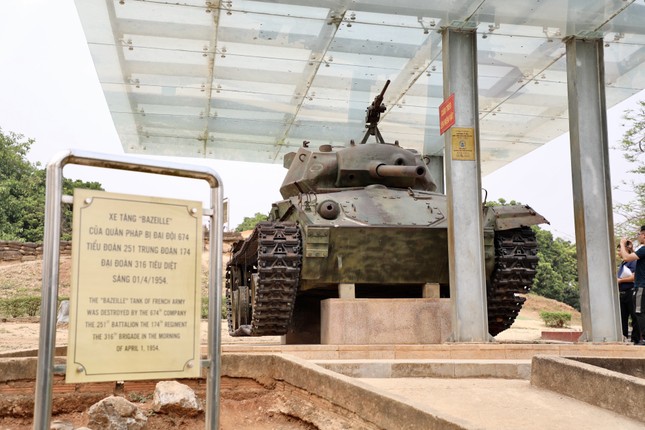 |
| In the photo is the wreckage of an 18-ton French Bazeille tank destroyed by our Company 674 (Battalion 251, Regiment 174, Division 316) at Hill A1. |
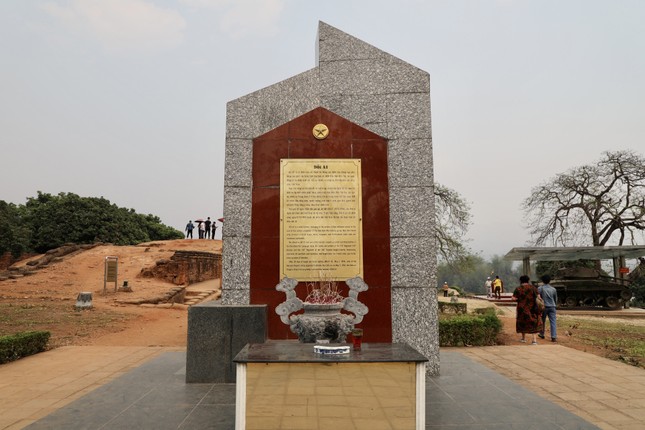 |
| Memorial at A1 Hill relic. |
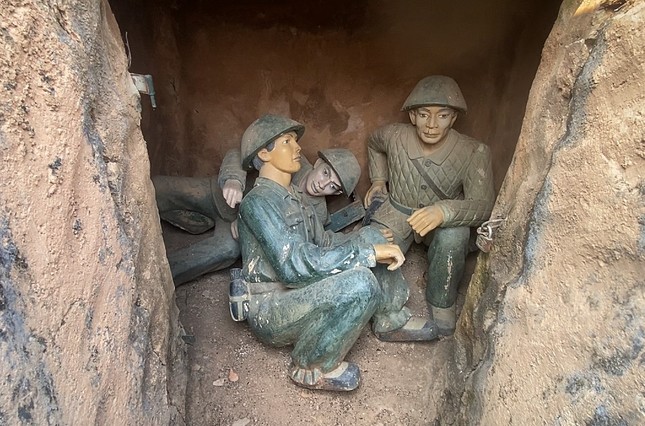 |
| When attacking hill A1, the enemy entrenched in a bunker on top of the hill and fired artillery shells, forcing us to launch many attacks but without success. After that, our Campaign Command decided to dig a tunnel, go deep underground and use large explosives placed at the foot of the enemy's bunker. |
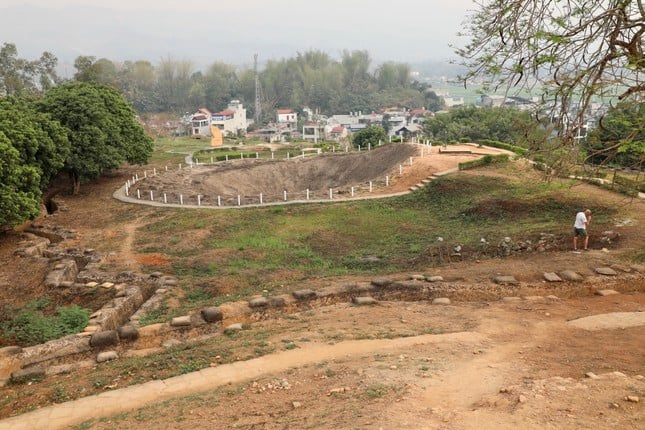 |
| However, because the soil on hill A1 was too hard, the soldiers dug the tunnel for 14 days and nights but still did not reach the destination. The plan had expired, and we could not wait any longer, so we decided to detonate the 960kg explosive. Although the explosive was still about 30m away from the enemy's underground tunnel, the destructive power was so fierce that it created conditions for our troops to charge in, destroy and capture the enemy on hill A1. |
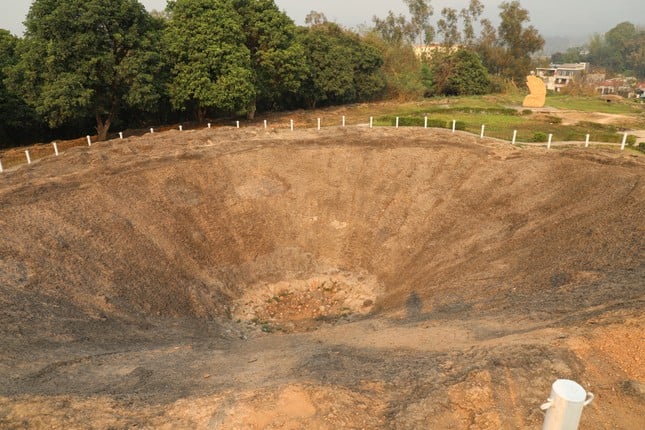 |
| In the photo are the remains of the explosive explosion on hill A1. This is a testament to the patriotism, the strength of great unity and the courage of our people. |
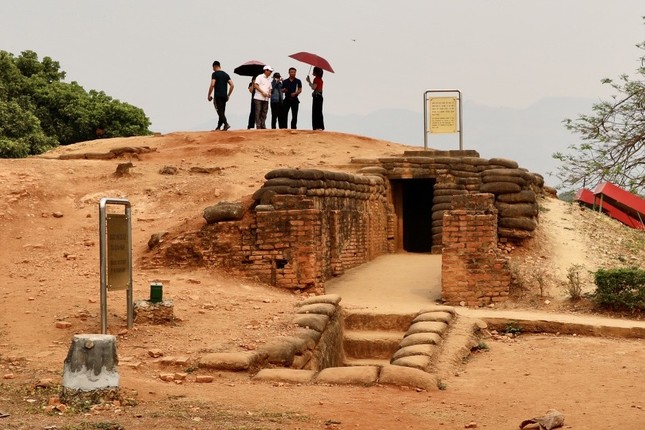 |
| The French command bunker at A1 base is an underground bunker dug deep into the hill, which was the wine cellar of the French consulate before 1945. According to some documents, this bunker was the French Post Office bunker during the Dien Bien period. On November 20, 1953, French paratroopers occupied Dien Bien Phu and consolidated this underground bunker into a military base. The reason why the war at A1 hill lasted so long and we lost a lot of troops was because the enemy relied on this underground bunker. |
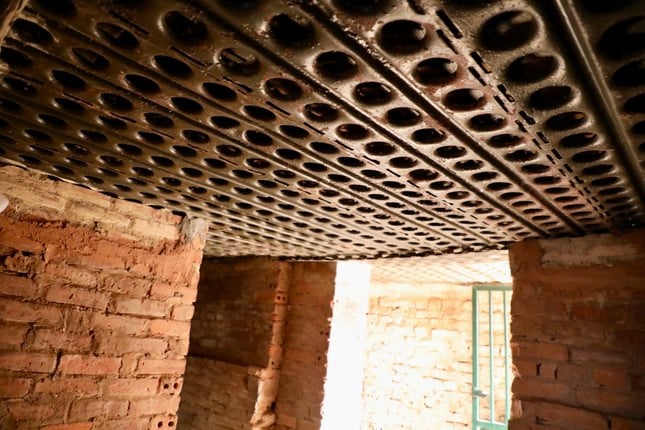 |
| The basement area is about 18m2 and is divided into 2 compartments, one of which is the working place of the radio information department. The basement has two entrances and exits, four sides are solid brick walls, the basement roof is poured with thick concrete. |
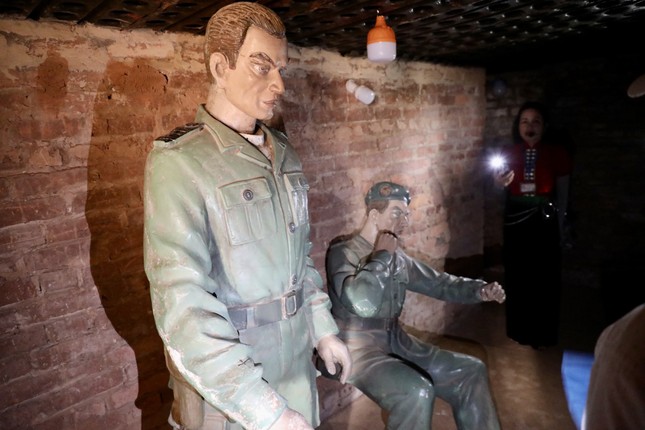 |
| The bunker has now been renovated and restored with more durable materials. A number of French soldier mannequins are on display in the bunker to recreate the scene during the war. |
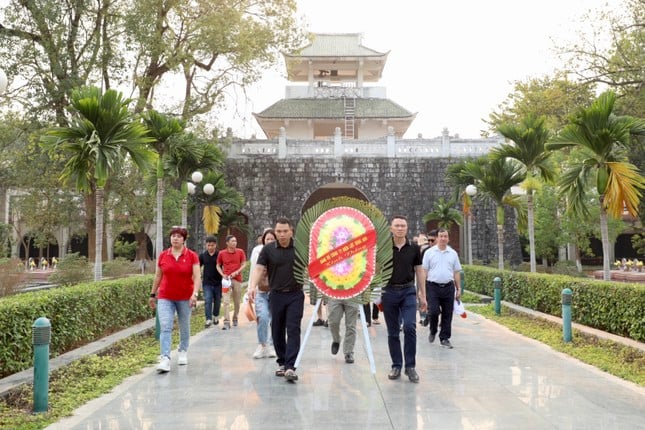 |
| Located a few hundred meters south of the historical site of A1 hill is the A1 martyrs cemetery (built in 1958). This is the resting place of 644 heroic martyrs who died in the Dien Bien Phu campaign. |
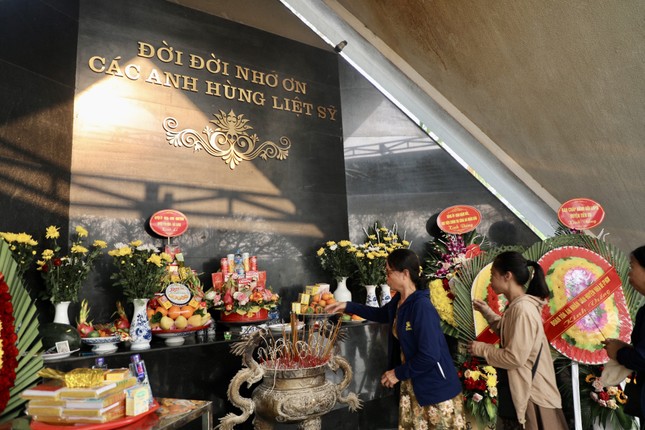 |
| On the occasion of the 70th anniversary of Dien Bien Phu Victory, people and tourists came to A1 martyrs cemetery to offer incense to commemorate the heroic martyrs who died for the Fatherland. |
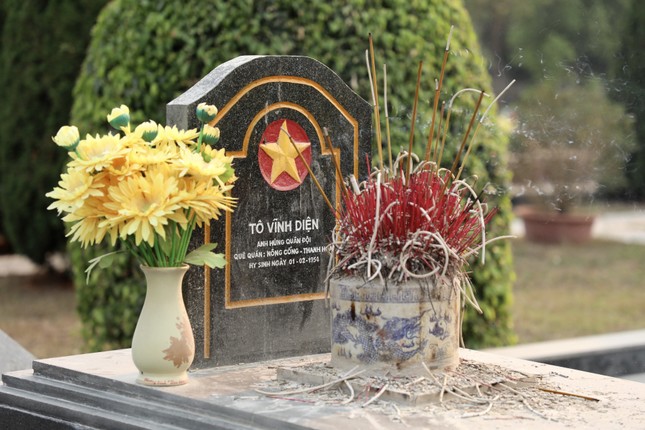 |
| In the A1 martyrs cemetery, most of the graves are of unidentified martyrs. The cemetery has 4 large graves with the names of 4 heroes engraved on them: Phan Dinh Giot, To Vinh Dien, Be Van Dan and Tran Can. This is one of 3 national cemeteries in Dien Bien province. |
Tienphong.vn
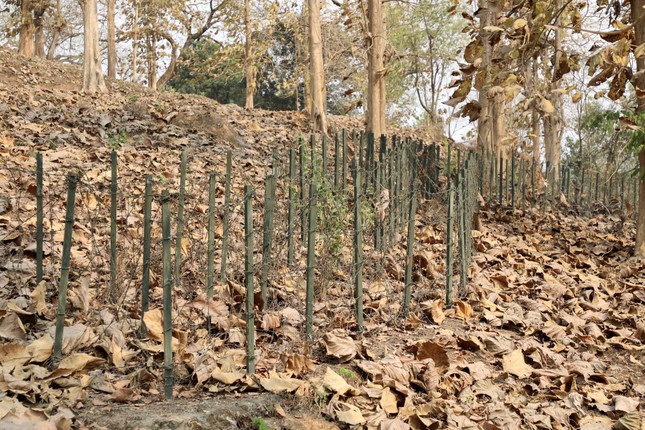
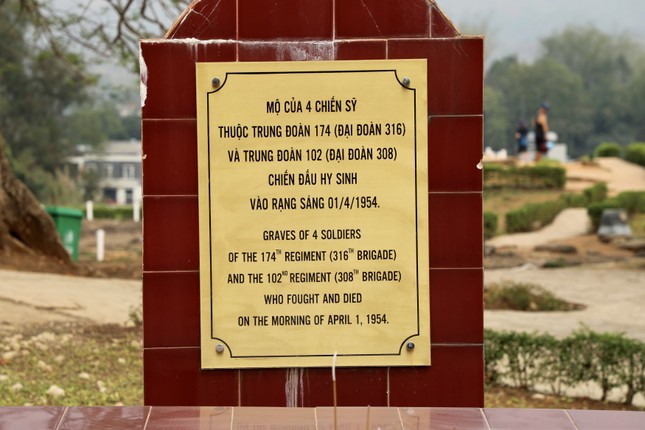
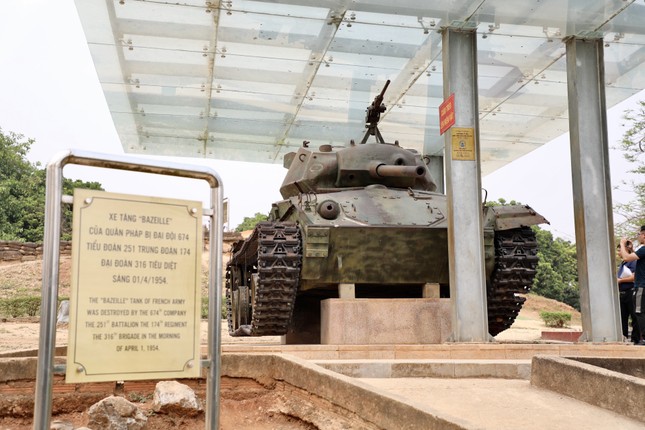
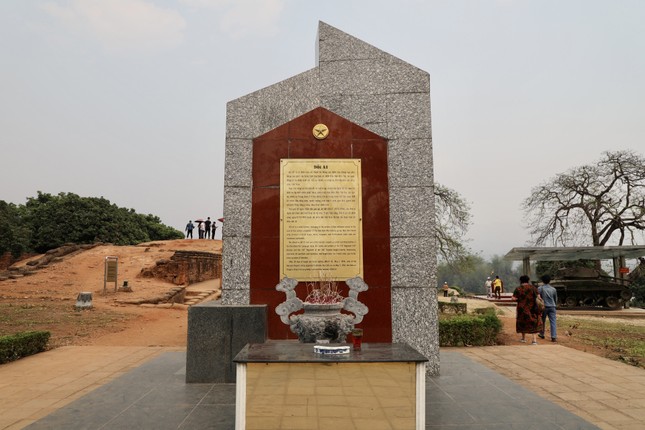
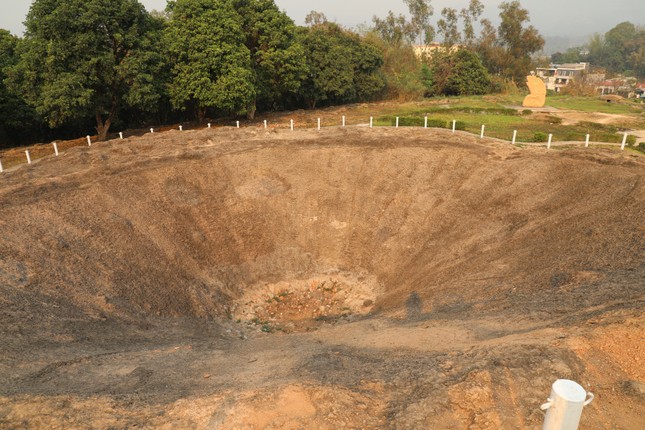
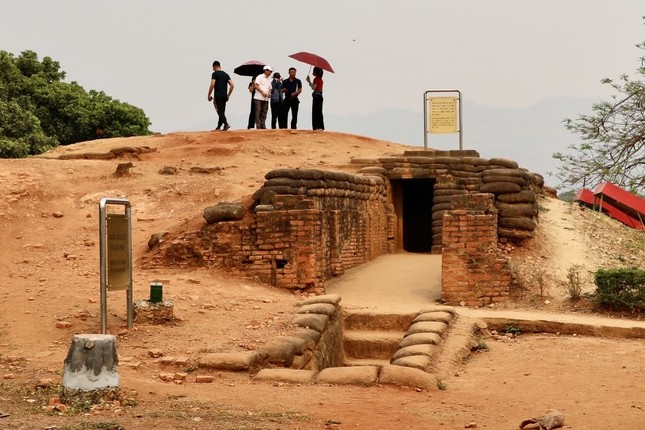
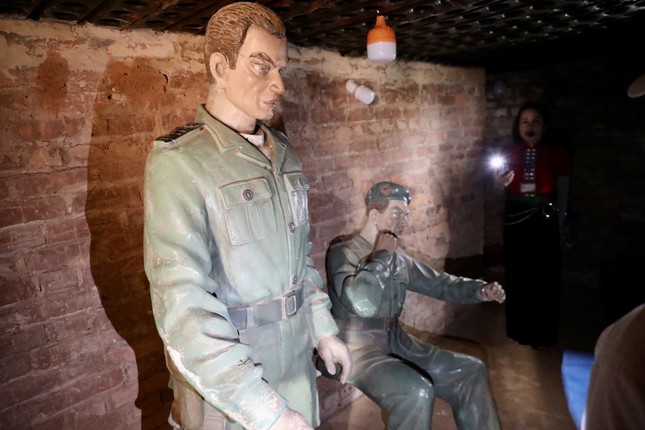
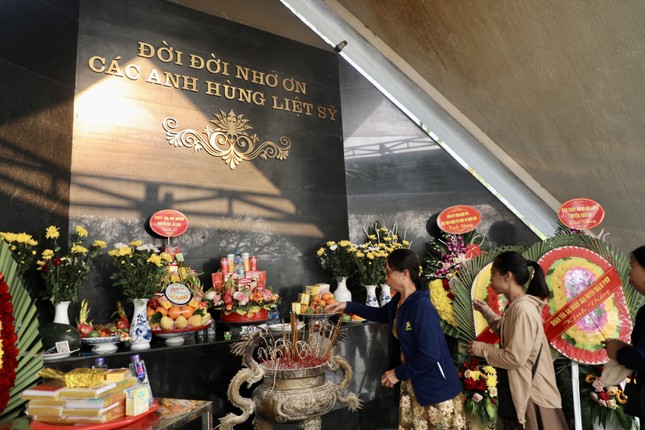


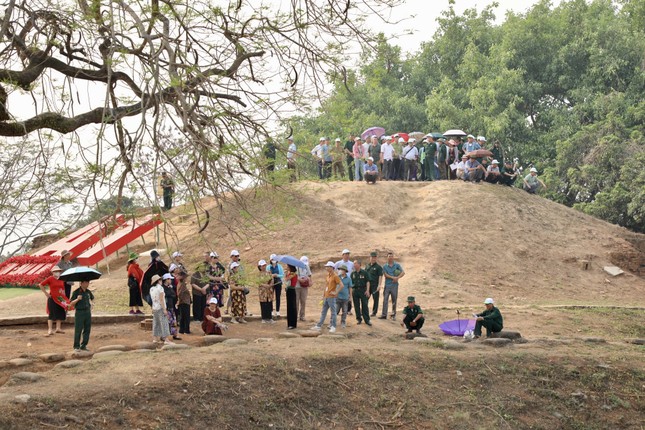
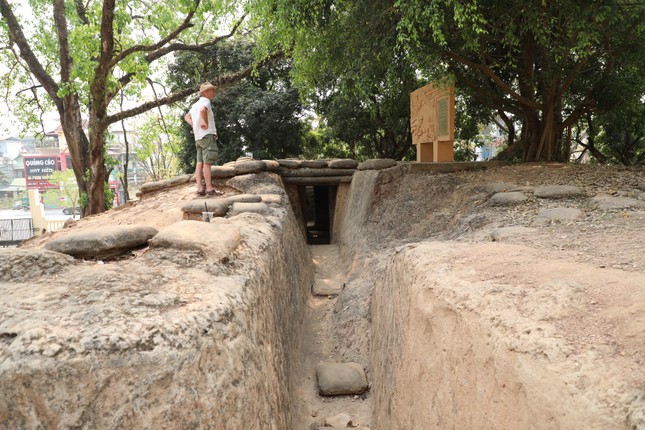
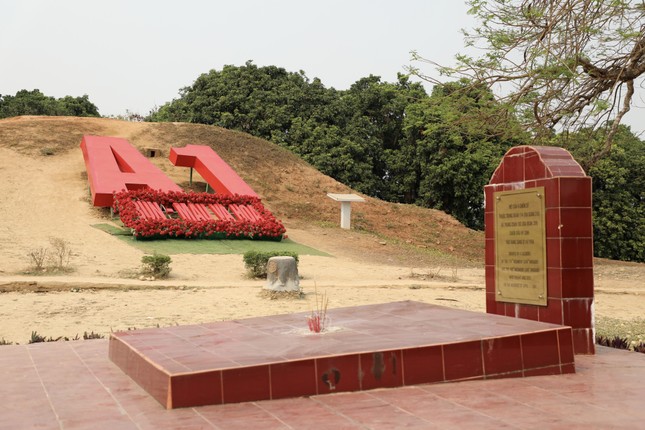
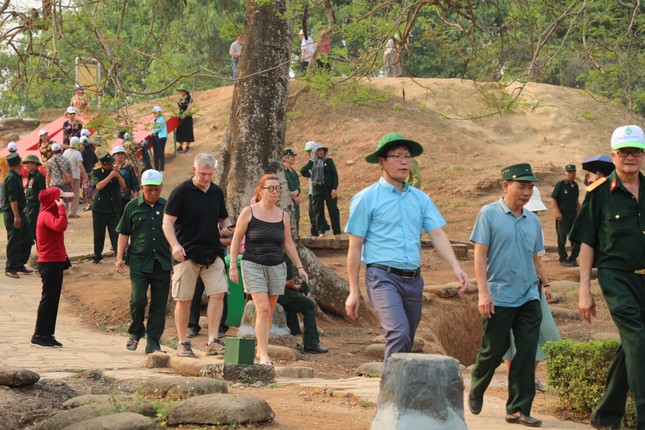
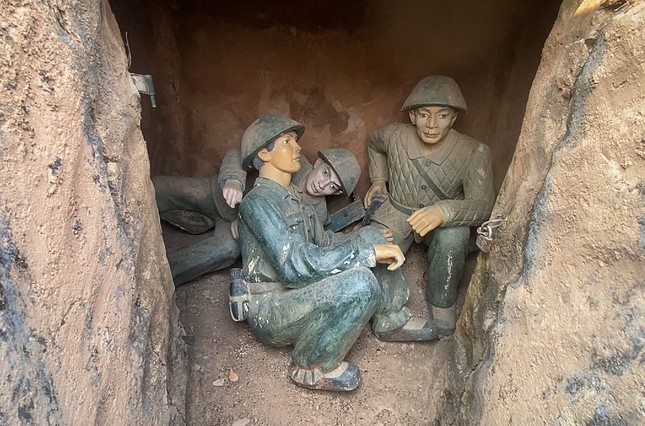
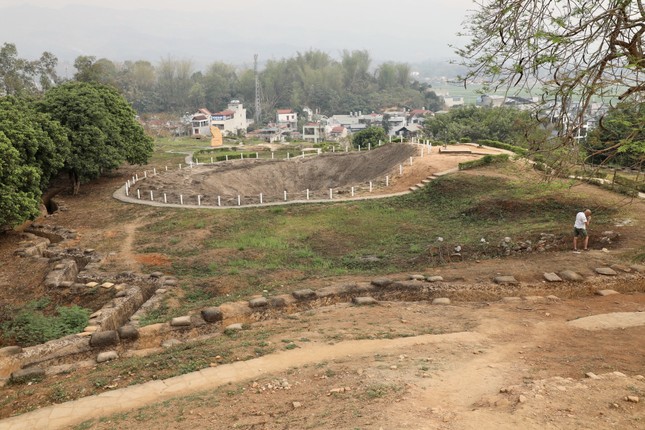
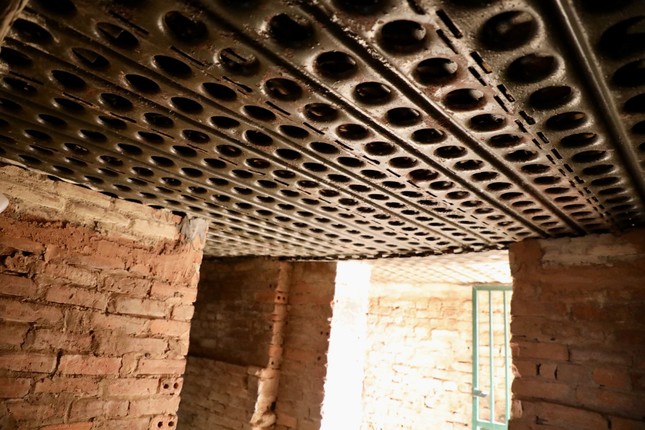
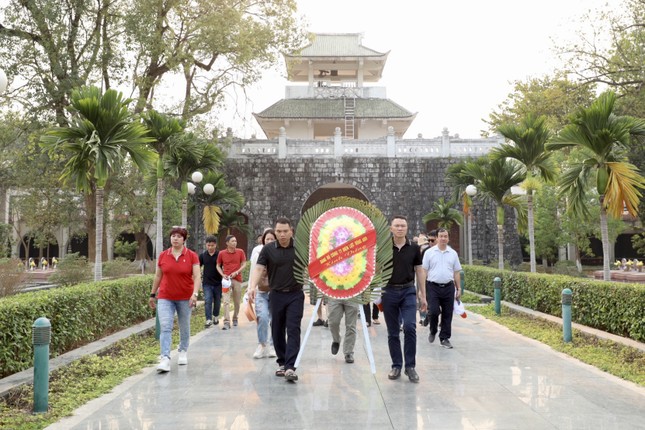
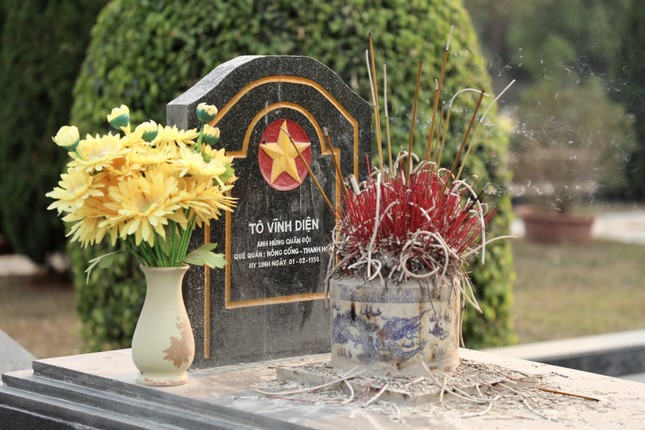




![[Photo] Opening of the 13th Conference of the 13th Party Central Committee](https://vphoto.vietnam.vn/thumb/1200x675/vietnam/resource/IMAGE/2025/10/6/d4b269e6c4b64696af775925cb608560)
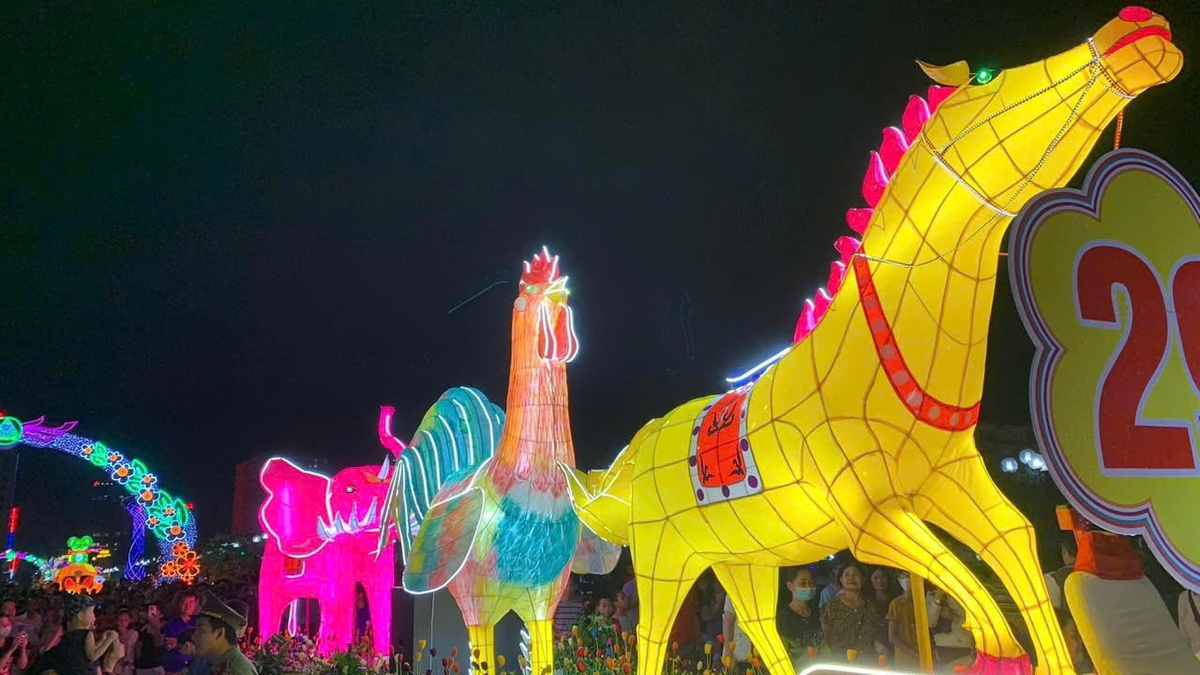
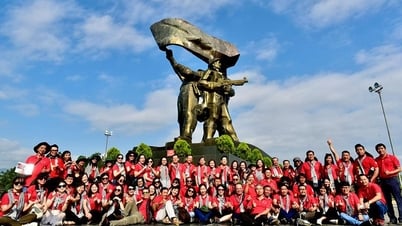



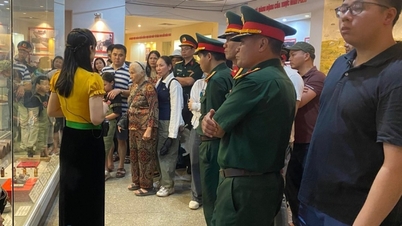


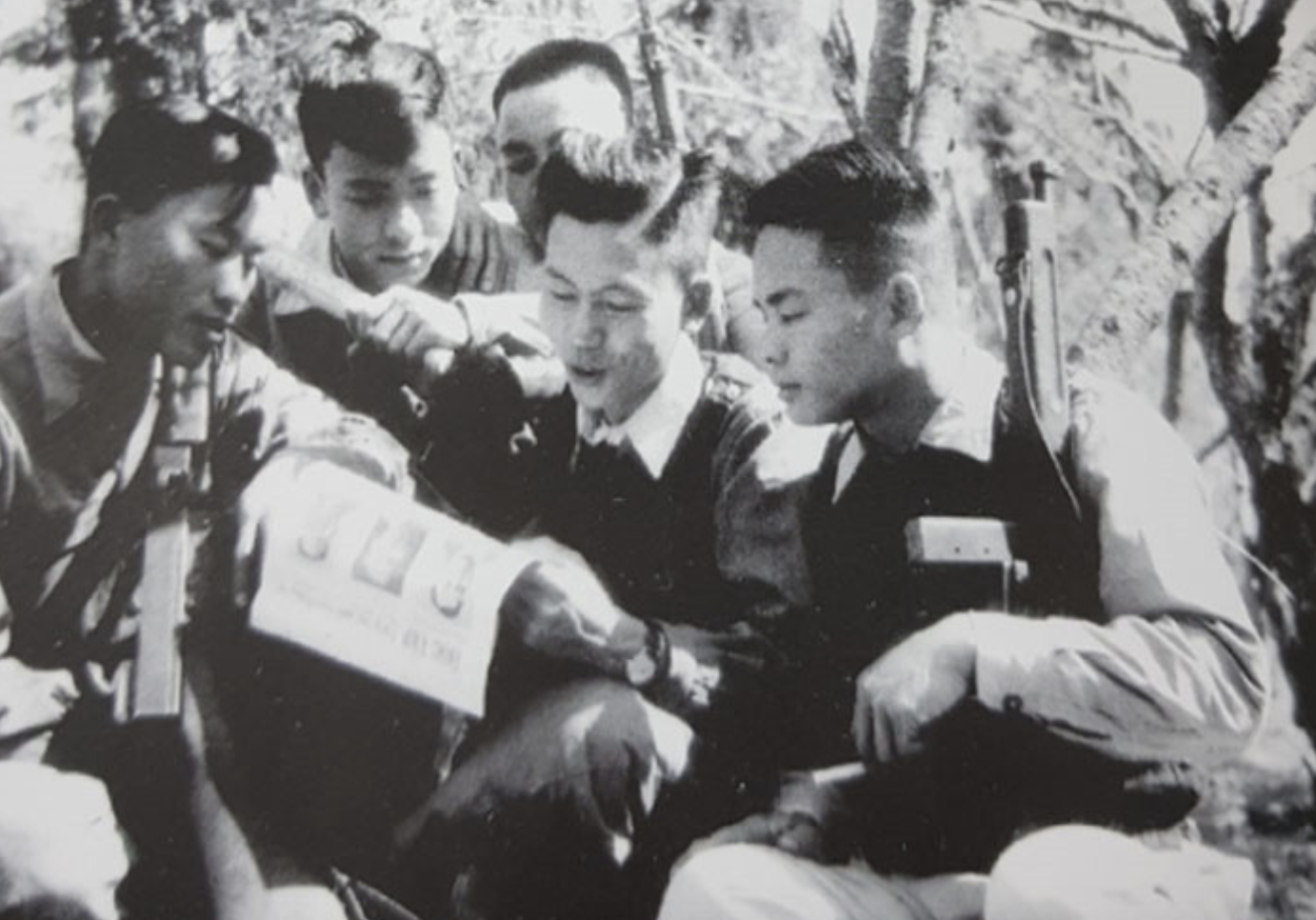










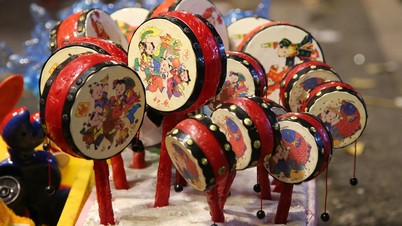







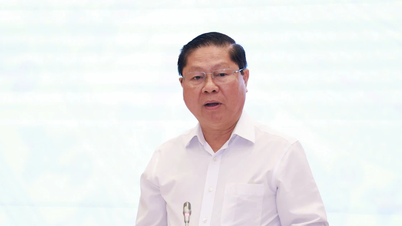
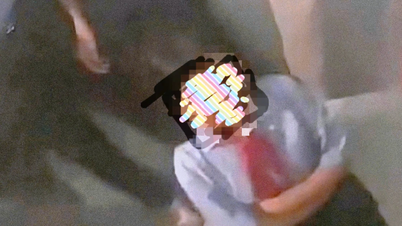




![[Photo] Prime Minister Pham Minh Chinh chairs the Government's online conference with localities](https://vphoto.vietnam.vn/thumb/1200x675/vietnam/resource/IMAGE/2025/10/5/264793cfb4404c63a701d235ff43e1bd)


























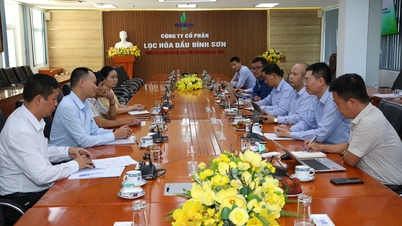


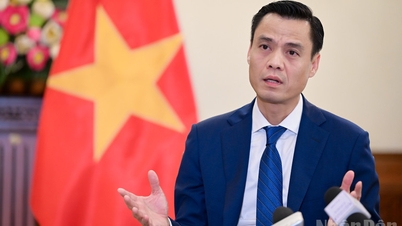

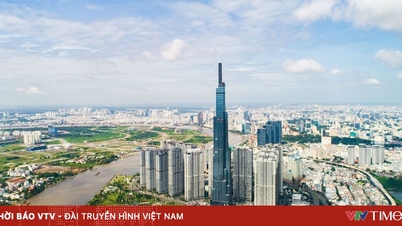


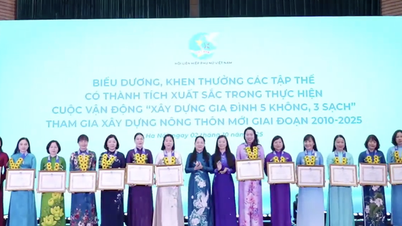

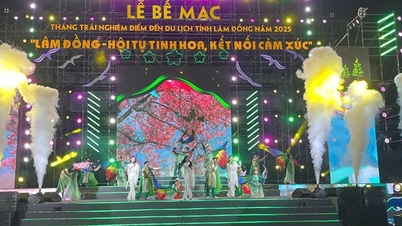


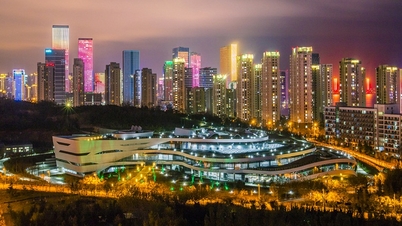

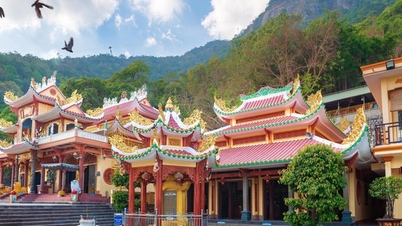
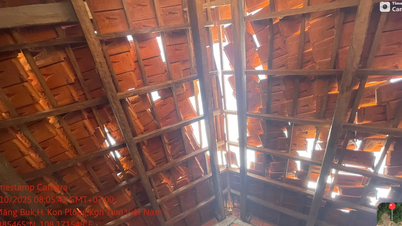

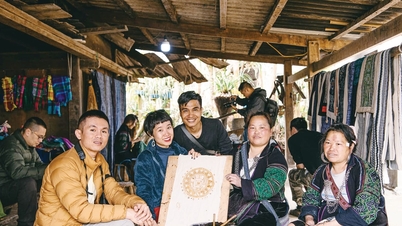



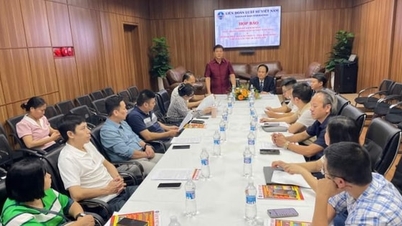


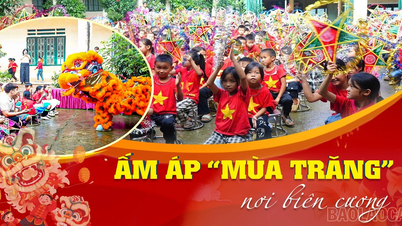












Comment (0)